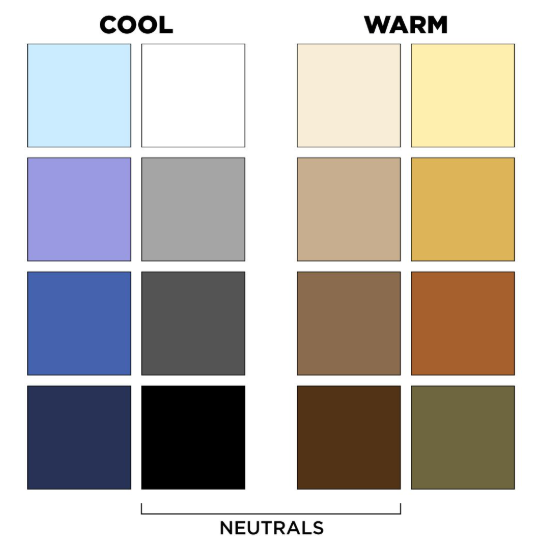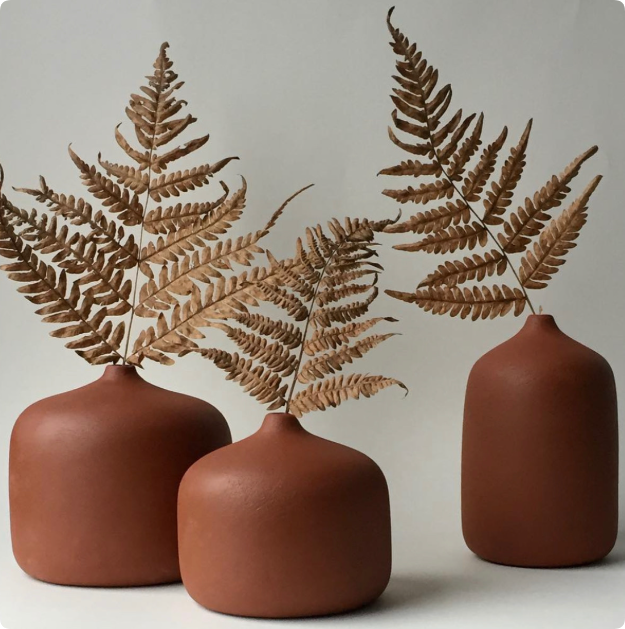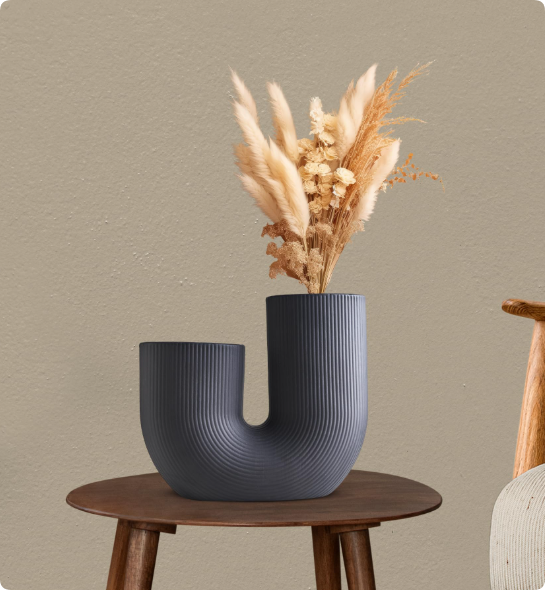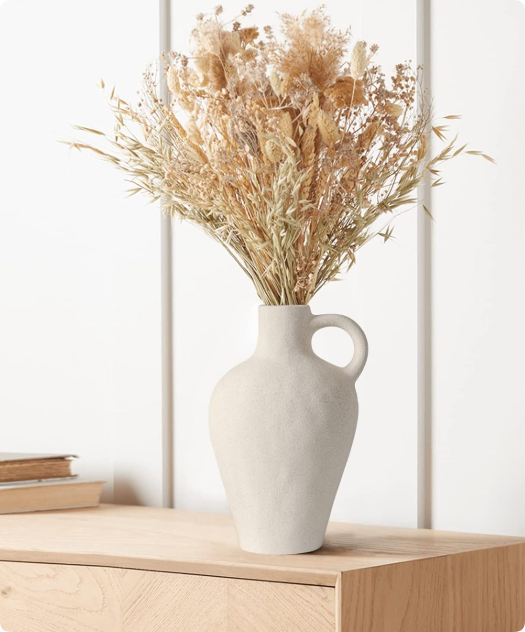In recent years, minimalist designs and neutral color palettes have become a dominant trend in various sectors of design, including ceramic pottery. Whether it’s flower pots, vases, or home decor items, consumers are gravitating towards pieces that embrace simplicity, clean lines, and understated elegance. But why is this trend gaining so much traction, especially in the global ceramic pottery market?
In this blog post, we’ll dive deep into the reasons behind the rise of minimalist designs in ceramic pottery, explore how color influences consumer choice, and highlight what this means for retailers and manufacturers in the industry.
The Appeal of Minimalism in Ceramic Pottery
Minimalism as a design philosophy has been around for decades, but it has gained incredible momentum in recent years. The core idea behind minimalism is to strip away excess and focus on simplicity and functionality. This is especially true in the ceramic pottery market, where consumers are seeking elegant, clean, and timeless designs.
1. Simplicity Creates a Sense of Calm
In today’s fast-paced world, people are looking for ways to create peaceful, calming environments at home. Minimalist ceramic designs—often characterized by smooth surfaces, neutral tones, and subtle textures—offer a sense of tranquility and serenity. Whether it’s a white ceramic flower pot or a simple, elegant vase, these designs help transform any space into a more soothing and organized area.
2. Versatility in Home Decor
One of the key reasons minimalist ceramic designs are so popular is their versatility. Neutral colors like white, beige, and grey fit seamlessly into a variety of interior design styles, from modern to bohemian, and everything in between. Minimalist ceramic pots and vases can be paired with almost any type of plant, furniture, or home accessory, making them an easy addition to any home decor scheme.
3. Timelessness Over Trends
Minimalism isn’t just a passing trend—it’s a lasting style choice. Unlike overly ornate or trendy designs, minimalist ceramics remain relevant and timeless. People appreciate the longevity of minimalist designs, knowing they won’t go out of style after a season or two. This timeless appeal makes minimalist ceramics a favorite for both personal use and as gifts.
How Colors Influence Consumer Choices in Ceramic Pottery
Color plays a significant role in shaping consumer preferences when it comes to ceramic pottery. While vibrant and bold colors have their place, the subtle tones of minimalist designs are winning over many consumers. Let’s break down why neutral colors are so compelling in today’s market.
1. Neutral Tones for Every Space
Neutral colors like white, grey, beige, and black are often associated with sophistication and versatility. These colors can easily complement a variety of plants, furniture pieces, and home decor styles. Ceramic pots in neutral tones allow the plant itself to be the focal point, rather than the container, creating a balanced aesthetic.
Additionally, these colors are ideal for urban environments, where space is limited and the design needs to be both functional and stylish. Neutral ceramics can also create a sense of harmony, making small apartments or compact spaces feel bigger and more cohesive.
2. Warm vs. Cool Tones: Understanding the Impact

While neutral tones dominate the minimalist design trend, understanding the difference between warm and cool tones can help retailers and manufacturers cater to a wider range of customer preferences. Warm tones like earthy browns and soft terracotta offer a cozy, inviting feel, while cool tones like grey and blue have a more modern, sleek appearance.
Depending on the customer’s aesthetic preferences and the mood they want to create in their space, both warm and cool minimalist designs can be a great option. For example, a terracotta flower pot might work well in a rustic or earthy-themed room, while a pale grey ceramic vase fits perfectly in a modern, Scandinavian-style living room.
3. Sustainability and Eco-Friendly Appeal
Minimalist ceramic designs often feature earthy tones that align with the growing consumer interest in sustainability. Eco-conscious consumers are drawn to products that not only look good but also align with their values. Many ceramic pottery manufacturers today are embracing eco-friendly materials and sustainable production methods, adding another layer of appeal to minimalist designs.
The Market Demand for Minimalist Ceramic Pottery
As minimalist designs continue to thrive, there’s also been an increase in demand for high-quality ceramic products that fit within this trend. Retailers and manufacturers need to understand the shift in consumer behavior and adjust their product offerings accordingly.
1. Increased Interest in Eco-Friendly Products
Sustainability is no longer just a buzzword—it’s a key factor influencing consumer purchasing decisions. People are now more likely to invest in products made from sustainable materials, especially when it comes to home decor items like ceramic vases and flower pots. Brands that embrace eco-friendly production practices and use natural, non-toxic materials are seeing a boost in sales.
2. Customized and Personalized Products
Another growing trend in the ceramic pottery market is customization. With the rise of personalized gifts and custom-made items, consumers are looking for unique pieces that reflect their individual style. This is especially true in the ceramic pottery industry, where retailers are offering options for customized vases, flower pots, and home accessories.
Manufacturers who offer OEM and ODM services can tap into this demand by allowing customers to personalize their orders, whether through color selection, logo placement, or custom designs.
3. The Role of E-commerce in Growth
E-commerce platforms have become a critical part of the ceramic pottery market’s growth. Online retail allows consumers to explore a wide variety of minimalist ceramic designs, compare prices, and read reviews. This has led to an increase in direct-to-consumer sales, with online stores and marketplaces such as Etsy, Amazon, and Alibaba providing an accessible platform for ceramic pottery brands to reach global customers.
Comparison of Ceramic Pottery Brands Focused on Minimalist Designs
To further illustrate the appeal of minimalist ceramic designs, let’s take a look at five leading brands that are making waves in the market. These companies have embraced simplicity in their product lines, offering neutral-toned, elegant pieces that cater to the modern consumer’s tastes.
| Brand | Key Features | Design Philosophy | Target Market |
|---|---|---|---|
| East Fork Pottery | Specializes in earthy, muted tones and organic shapes. Popular for their handmade, sustainable pottery. | Prioritizes sustainability and craftsmanship with a minimalist aesthetic. | High-end home decor stores, lifestyle brands. |
| Mud Australia | Known for their sleek, minimalist porcelain vases and dinnerware. Their colors are soft, with subtle glazes. | Australian design with an emphasis on subtle luxury and simplicity. | International interior design professionals and luxury home retailers. |
| L’Objet | Offers luxurious minimalist ceramic vases and pottery with clean lines and premium finishes. | Fuses minimalist design with opulent materials and textures. | Upscale home decor retailers, luxury gift shops. |
| Bloomingville | Danish brand offering a range of minimalist ceramic pots, planters, and accessories with neutral colors. | Scandi-chic minimalist design, ideal for modern home interiors. | Scandinavian and European home decor markets. |
FAQ: What People Are Asking About Minimalist Ceramic Pottery
1. Why are neutral colors so popular in ceramic pottery?
Neutral colors like white, beige, and grey are timeless and versatile. They complement various interior styles and allow plants or other elements in the space to stand out. Additionally, these colors create a calm and peaceful environment, which is highly valued in home decor today.
2. Can minimalist ceramic pottery work in outdoor spaces?
Yes, minimalist ceramic designs can work beautifully in outdoor spaces like gardens and patios. The simplicity of the design ensures that the pottery doesn’t overpower the natural beauty of plants and surroundings, making it a perfect choice for outdoor decor.
3. What are the benefits of eco-friendly ceramic pottery?
Eco-friendly ceramic pottery is made using sustainable materials and production processes, which is important to many consumers today. These products are not only better for the environment but are often higher in quality, making them a long-lasting investment for consumers.
Conclusion
The shift towards minimalist designs and neutral colors in the ceramic pottery market is more than just a fleeting trend. It reflects the growing desire for simplicity, sustainability, and timeless beauty in home decor. As a result, manufacturers who embrace these principles and offer high-quality, eco-friendly products will be well-positioned for success in an ever-evolving market.
At Hale Ceramics, we are proud to offer a wide range of minimalist ceramic products that cater to the needs of global home decor retailers, garden supply shops, and e-commerce businesses. Whether you’re looking for a custom flower pot or a sleek ceramic vase, we provide both OEM and ODM services to meet your unique requirements.




